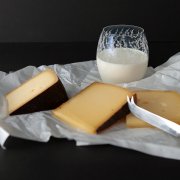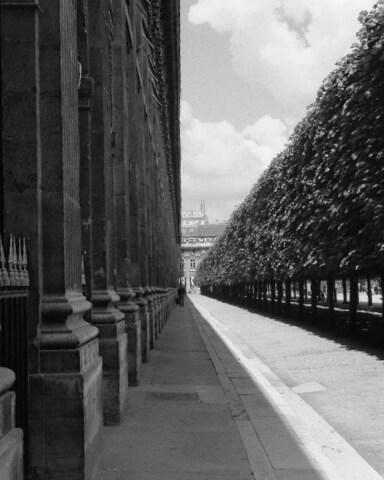Whether matcha or white tea. A cup of tea is always time well spent
Tea is a piece of culture and helps in all situations of life. Whether we’re waiting for the fallout from Brexit or our vaccination date. A cup of tea is always time well spent.
A cup of comfort
“I’m feeling a bit under the weather” is what people in the UK mean by not feeling quite right. Maybe a cold is moving in, maybe you just need some respite and comfort. It’s good when someone offers to make a cup of tea.
In this case, it does not matter if the tea is brewed with a tea bag that was still lost in the kitchen drawer. You’ll feel better in a minute.
90 percent of all herbal and fruit teas and 40 percent of black and green teas are purchased in tea bags in Germany, according to the German Tea Association’s 2020 Report.
Time for the tea leaf instead of tea dust
It doesn’t always have to be quick and convenient, so tea dust, which is often found in tea bags, gets into the cup.
Many arguments speak for the tea leaf:
Aroma pure
Pure tea leaves offer the full aroma and do not need additional flavorings, which are sometimes used to “mask” the inferior quality of tea.
Loose tea leaves are also available in tea bags. It’s worth paying attention to. Fortnum & Mason tea experts believe that green, white and oolong tea are the least suitable for the tea bag, even if the tea is contained in it in loose leaf form.
More tea enjoyment
Not only the quality but also the quantity of enjoyment increases the loose tea leaf from the tea box. 250 grams of tea, a widely used unit of the tea box, is enough for about 100 cups.
If you brew the tea leaves several times, which is quite possible with good loose tea, it is even many times more.
Less waste
The loose tea creates far less waste compared to the tea bag. For all gardeners an important argument: the tea leaves are well suited for the garden compost and also houseplants are happy about tea leaves as fertilizer.
Appreciation
The time it takes to prepare the loose tea is also a form of appreciation for one’s own tea enjoyment as well as the strenuous work done by the pickers on the tea plantations.
A neat pot of tea goes well with high tea and on the desk in the home office.
Yellow, green, white or black
Compared to coffee, tea has many colors. All have the same origin: the tea plant Camellia sinensis. The botanical name reveals the origin – the tea plant has its historical roots in what is now southwestern China and Myanmar. China is still the largest tea producer in the world.

A Portuguese monk brought tea to Europe for the first time. The Dutch saw this as a business with potential and, starting in 1606, loaded their trading ships with black tea, which sailed from China to Europe via their trading post on Java at the time.
Soon after, the British East India Company was also active in the tea trade. The Portuguese Princess Catherine of Braganza, married to the English King Charles II and a tea enthusiast, started the trend of tea love, first among the English aristocracy.
Despite many excellent coffee shops, tea is still valued in the UK today with average annual per capita sales of 1.19 kilograms of tea. Turkey holds the world’s top spot in tea sales with 2.7 kilograms per capita (2020).
White tea
For this tea, the young tea leaves and buds are harvested to then wilt in the dry. The very light color of the tea comes from the very short processing and oxidation process.
The delicate tea is appreciated by gourmets. Usually, only a very small portion of the young tea leaves and buds are harvested for this purpose and carefully processed.
White tea therefore usually has a higher price compared to tea leaves that have remained longer on the bush and are only then processed.
After a tour of a tea plantation in Sri Lanka, we experienced visitors who spared no argument to secure for themselves the few packages of white tea offered for sale; to the chagrin of all other interested buyers.

Yellow tea
Even more exclusive is the yellow tea. Here, too, the still very young, fresh tea leaves are harvested in spring. The withering of the leaves that then begins is brought to a halt in tea production with the help of heat, the tea leaves are wrapped in a special cloth and cooled.
This procedure, heat and cool down is repeated a few times.
The aim is to stop the oxidation process at a very specific point in time, so that the degree of oxidation is between that of white and green tea. The complex process leads to the relatively high price of the yellow tea.
Green tea
Green tea is traditionally a highly valued type of tea in countries such as China, Japan and Korea, and it has also gained a lot of popularity in Europe.
For a long time, the vitamins and nutrients contained in it have been attributed a special degree of health-promoting effects, which, however, could not be scientifically proven.
Green tea is comparable to black tea in terms of the health effects of tea.
Black tea
The tea with the highest degree of oxidation and in a variety of flavors a classic. Similar to many wines that are combined as a cuvee from a mix of different grape varieties, the majority of black teas are made from a mix of different tea varieties.
The goal of tea blending is to combine the different characteristics of black teas, depending on their origin and harvest, in such a way that the taste experience remains as consistent as possible from year to year.
Puristic or mixed
In the mix, another crucial switch is made. The tea is either blended in pure form or other flavor components are added at this time such as essential oils, herbs, flowers or synthetic flavorings.
Earl Grey tea, for example, gets its characteristic flavor from the addition of the essential oil of bergamot, a citrus fruit grown in Europe, especially in Calabria.
However, Earl Grey Tea is not a registered trademark with corresponding property rights or a specifically protected recipe. This means that in the best case it contains essential (and therefore expensive) oil of bergamot.
However, it can also contain any flavoring similar to bergamot, which is allowed by food law. That’s why an Earl Grey Tea can taste subtly and elegantly perfumed but also obtrusively artificial.
Black teas are also traditionally blended with flowers such as jasmine, rose, orchids, or herbs such as mint, spices such as ginger, cardamom, or grains such as rye.
Tea blends, most of them with synthetic flavorings, have become very popular in recent years. A glance at the meter-long tea shelf in the supermarket shows the variety. You will have noticed, the flavors are sometimes miles away from the natural tea flavor.
“You drink coffee, I drink tea my dear”
Caffeine is present in both tea and coffee. However, the caffeine absorbed through tea has a milder effect than the caffeine of coffee. The effect of the caffeine from the tea lasts longer.
GloriousMe loves both coffee and tea. We especially like to have the following teas in our cups and bowls:
GloriousMe favorite teas
Matcha from P&T Berlin
If the lunch guests had gone back to their workplaces and the Japanese owner of the sushi restaurant had some time, we often enjoyed matcha tea in the afternoon, which the owner stirred before our eyes with concentration and deliberation.
The store in Frankfurt, very close to the GloriousMe office, unfortunately no longer exists. However, since that time we love matcha tea.

Matcha is ground tea powder of the Tencha variety. Here, too, the young tea leaves are harvested, which are covered for about 20 days before harvesting, so as not to expose them to too much sun. The harvested leaves are steamed, dried in the oven and then ground into powder.
The younger the leaves are harvested and the more gentle the subsequent processing, the more sweetness the matcha tea has. We like this sweetness and matcha from P&T and their store on Bleibtreustraße in Berlin, which is filled with excellent teas and stylish tea utensils.
Matcha teas with stronger bitterness are mostly used for foods such as ice cream, confectionery, or matcha lattes, in order to more strongly preserve the characteristics of matcha between sugar and other ingredients.
Sencha tea with roasted grain
Kinya is located in the small market hall in Frankfurt am Main. A Japanese gentleman and opera connoisseur who sells sushi, knives and tea. There is no online store but should you be in Frankfurt, just drop by there.
Tea with roasted grain has a pleasant warm, malty aroma. In Japan, this tea is served cold in summer as a refreshment after meals.
Marco Polo tea blend from Mariage Frères
If flavored tea, then preferably from Mariage Frères in Paris. Since testing different teas, we favor the balance of Marco Polo blend of organic teas. The name makes us dream of travel and adventure after the pandemic.

Sri Lanka white tea
Simply because we love this country and can not wait to travel there again soon and bring back white tea in the suitcase, in addition to wonderful impressions.
Lemon grass tea from GloriousMe
A pot of lemongrass tea is always on the desk at GloriousMe. We like the refreshing effect of lemongrass tea so much that we offer it in the GloriousMe Shop.
Tea by mail is also well received as a gift. Therefore, we have come up with attractive gift boxes. Here you can find the lemongrass tea.

Photographs © GloriousMe




